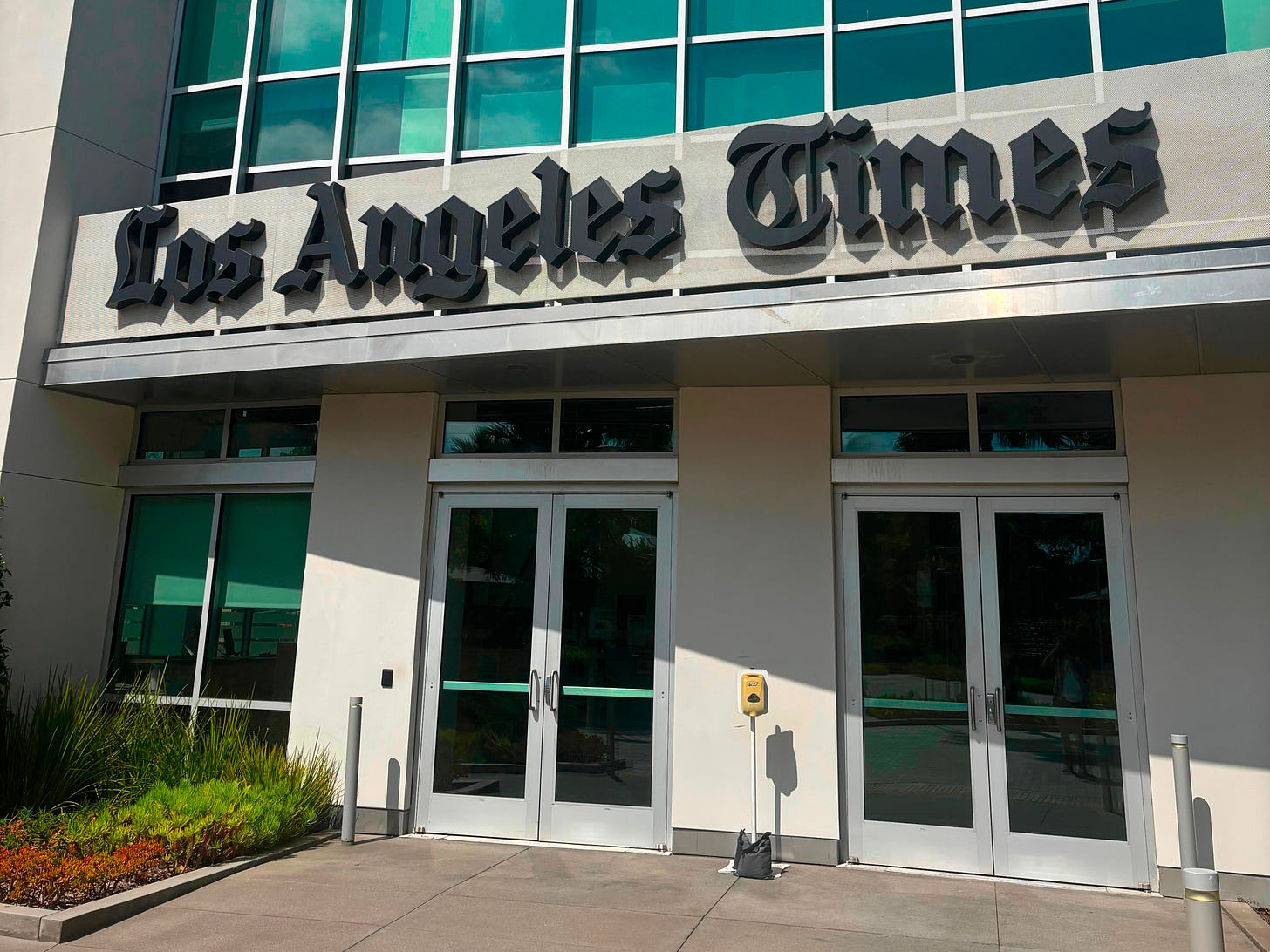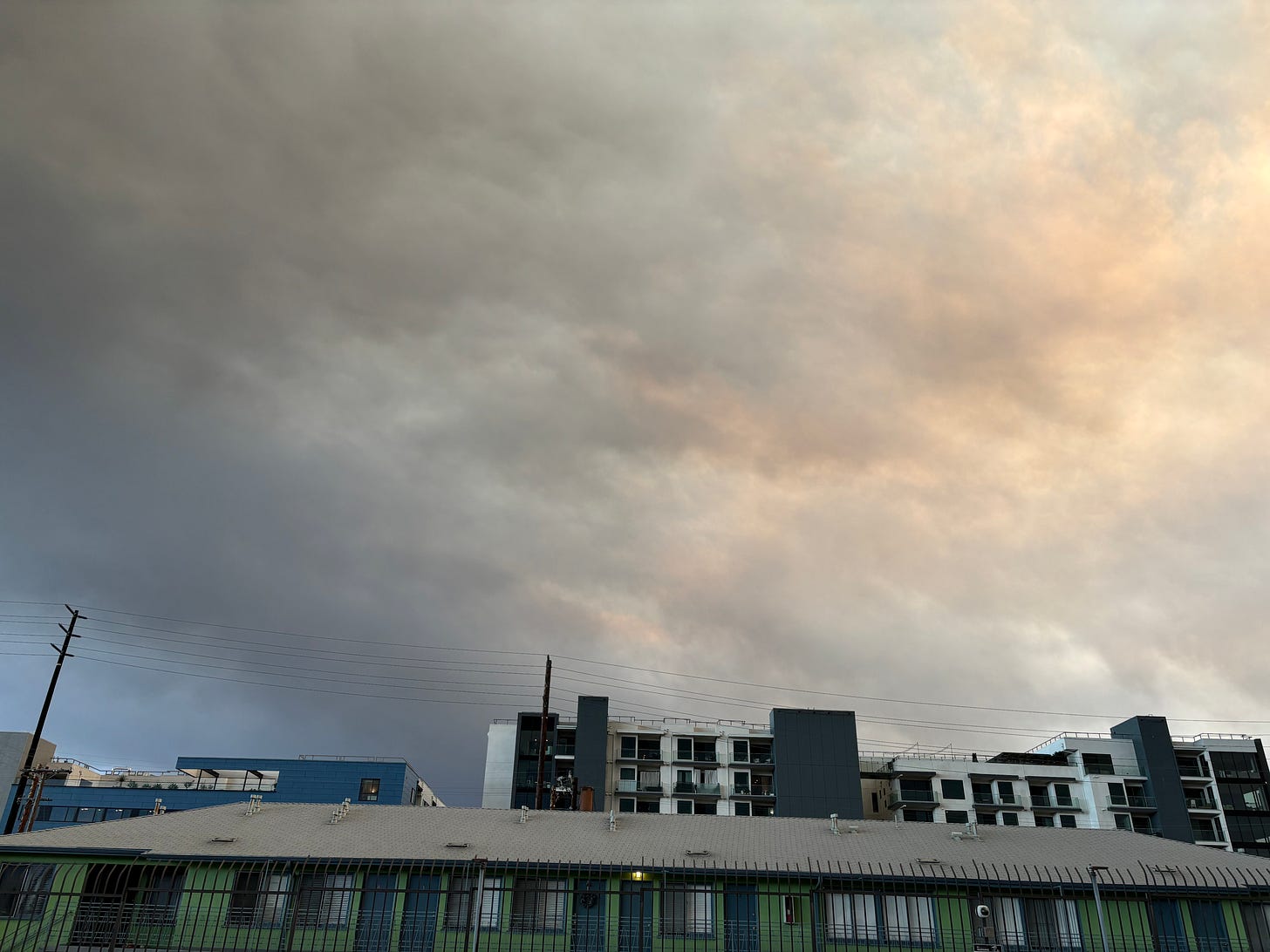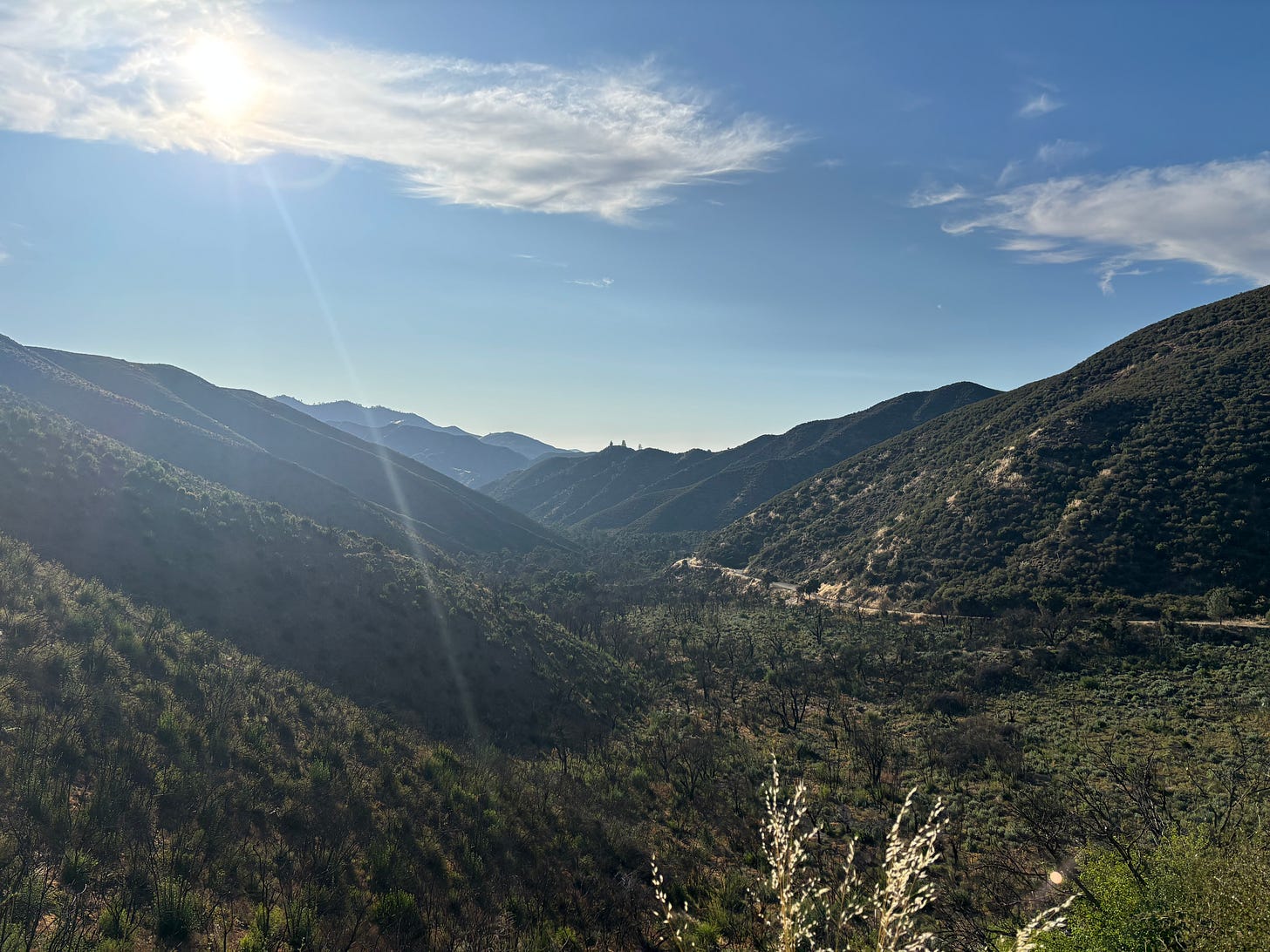Tough love for the L.A. Times
Just 13% of the newspaper's stories about the Eaton and Palisades fires mentioned climate change in January and February 2025.
I’ve said it before, and I’ll say it again: The Los Angeles Times does some of the best climate change journalism in the country. That was true before I left the newspaper a few weeks ago. It’s true now.
But as fossil fuel pollution rapidly warms the planet — producing deadlier and more destructive heat waves, wildfires, storms and other climate disasters — it’s incumbent on journalists covering extreme weather events to help readers understand the link to climate change.
And by that metric, California’s largest news outlet isn’t doing enough.
Early this year, L.A. County was hit by the worst climate disaster in its history: the Eaton and Palisades fires, which killed 31 people, burned thousands of homes and caused tens of billions of dollars in property damage. The Times published hundreds of news articles and videos about the wildfires in January and February, when public attention was highest, according to a new survey from UCLA Law’s Emmett Institute on Climate Change and the Environment.
Unfortunately, only 13% of those stories mentioned climate change, the survey found.
“The Times is an outlet that prides itself on covering context and telling the story behind the headlines. You’d expect them to have a richer, more accurate explanation of the forces in our lives,” said Evan George, the Emmett Institute’s communications director and a former news director at public radio station KCRW.
George conducted the survey with an undergraduate researcher, sharing it with me exclusively ahead of its release Tuesday.
He emphasized that failing to link increasingly extreme weather to global warming is a problem across the news business — and that The Times is better than many outlets. Media Matters, for instance, found that national TV networks mentioned climate during a mere 6% of news segments during the first two days of L.A. County fire coverage in January.
“It’s completely understandable that it’s missing from some coverage, especially in the real thick of it when you have boots on the ground covering a fire,” George said. “But many more [L.A. Times] stories could have drawn the connection.”
The science was straightforward, for reporters and editors who sought it out.
As early as Jan. 16, just over a week after the fires began, L.A. Times environment reporter Ian James wrote about a UCLA analysis explaining how global warming had dried out the Southern California landscape, fueling the fires’ ferocious growth. The analysis added to also a large body of previous research — much of it covered by The Times’ environment team! — revealing how global warming had primed California for bigger, more devastating conflagrations.
So George grew frustrated by story after story scrutinizing the L.A. Fire Department’s response, and Mayor Karen Bass’ whereabouts, and the lack of water in the Santa Ynez Reservoir — with nary a word about climate change.
“If you were reading the L.A. Times in the aftermath of the fires, it would be easy to conclude that these firestorms were the fault of an arsonist, or a fire chief who didn’t send fire trucks to the right location, or a mayor who wasn’t in town, or an empty reservoir — you’ve got all these players,” George said. “And the truth is that several factors made these urban fires explode, and made them as deadly as they were. And climate change is one of those factors. And to leave climate change off the list is to leave one of the culprits off the list.”
To be clear, the problem isn’t that Times journalists focused on issues besides climate change. The problem is that, for the most part, they ignored climate entirely.
It’s not hard to reference the climate crisis in a story where it’s plainly relevant, even if the story is largely not about climate. You don’t have to be a scientist or even an environment reporter to point out that global warming, caused mainly by fossil fuel pollution, is making fires bigger and more destructive.
“It should be standard media practice at this point that when you are reporting on a climate-driven extreme wether occurrence, you make the climate connection,” said Mark Hertsgaard, executive director of Covering Climate Now and environment correspondent for the Nation.
“If we are not making the connection in our coverage, it’s not just that we are leaving our readers uninformed. We are actively misinforming them,” he added.
I couldn’t agree more. I’m also sympathetic to my friends and colleagues at The Times and other local news outlets who are struggling to stay employed, avoid burnout and maintain journalistic integrity amid political attacks and meddling billionaires.
I asked Hertsgaard his advice for overworked reporters who have never covered global warming and don’t feel they have the capacity to go learn a seemingly complex new subject — especially one mired in political controversy.
His response surprised me. He brought up the early days of the COVID-19 pandemic, when hardly any reporters had covered infectious diseases or vaccinations.
“We saw this huge story in front of us and got up to speed quickly. And we got it basically right,” he said. “We met that challenge fairly well. We separated fact from fiction. We pushed back against the obvious politicization that we was coming from certain people, and the misinformation.”
Covering Climate Now offers tips and examples for journalists looking to make the link between extreme weather and rising temperatures.
Again, this is a much bigger challenge than the L.A. Times — bigger than the U.S., even. The latest data from the Media and Climate Change Observatory, an academic research project, shows that global climate news coverage peaked 16 years ago, during the Copenhagen summit and a dumb email hacking scandal known as “climategate.” Which means that even as weather disasters have gotten worse, people are hearing about the climate crisis less — at least from legacy media.
Max Boykoff, a University of Colorado Boulder environmental studies professor who leads the data collection, said he wasn’t surprised that just 13% of L.A. Times wildfire stories in January and February mentioned climate.
“It’s become so politicized, scrutinized and partisan,” he said. “And [non-environment reporters] think of it as an issue that’s on your beat, not theirs, instead of an issue that threads through every part of a news organization.”
Think about it this way: If you’re a reporter covering a heat wave, or a fire, or a flood, why would you open yourself up to more hate mail than usual — even if you know it’s bullshit — by adding a sentence about global warming, or fossil fuels? You have other stories to get to. Your editor isn’t asking for it. Fewer words is always better.
Maybe you’re not worried about angering readers or sources. It just doesn’t occur to you to bring up climate, because that’s not how you see your job. You do breaking news. Or politics. Or sports. Not the environment.
Or maybe you’re open to making the climate connection, but you don’t feel like you know enough. You haven’t found the Covering Climate Now tip sheet yet. Or your newsroom leaders haven’t offered enough training.
“This isn’t the problem of individual journalists in a breaking news situation,” George said. “It’s really something editors should address.”
The Times’ editors have the knowledge and vision to make this a newsroom-wide priority. They’ve cultivated a remarkable array of award-winning climate journalism, from an investigation into extreme heat’s deadly toll and an eight-part series on the Colorado River to a hard-hitting Exxon exposé.
I was privileged to work with the environment reporters who produced those stories. They’ll keep churning out great journalism no matter what.
But not everyone seeks out climate news. Folks who might scroll past a headline about the latest scary-sounding study deserve to know that our planet is heating fast. That fossil fuels are threatening our lives and livelihoods.
Thirteen percent isn’t good enough. Journalists need to tell the whole story. All journalists, all the time.






This is such a brave post - calling out your former employer for its lack of complete reporting, and pointing out why it has been the case. I hope you get far more pats on the back for this than any sort of colleague backstabbing from jealously. Hopefully the LAT editors will wake up. You are venturing out with truth, fairness and accuracy as your guide. That will always prevail. Start with the obvious - climate change - and get those who politicize it and think they can explain it away without taking ownership of the foundational problem to work toward a solution perhaps future generations will thank them for when history is written. Thnx Sammy.
Great article Sammy! It definitely reads as very sympathetic to your fellow journalists. I actually felt it was almost too sympathetic for one specific part:
"Or maybe you you’re open to making the climate connection, but you don’t feel like you know enough. You haven’t found the Covering Climate Now tip sheet yet. Or your newsroom leaders haven’t offered enough training."
First, do journalists really need training to simply add a sentence or two mentioning a related topic? Second, I'm not sure you even need to be that knowledgeable about climate change to cover the fact that the scientific community states there is a link between climate change and extreme weather events.
In the end, individuals are responsible for their words or lack thereof and the phrase 'lie by omission' exists for a reason. If you want to fairly cover a topic, then provide all the context!